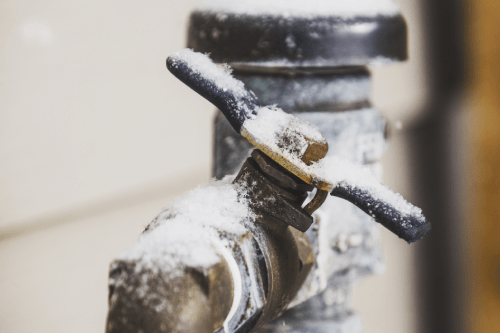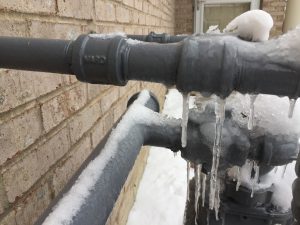Important Tips to Avoid Frozen Pipes in Cold Weather: Expert Insights
Important Tips to Avoid Frozen Pipes in Cold Weather: Expert Insights
Blog Article
We have found this post on How to prepare your home plumbing for winter weather directly below on the internet and reckoned it made perfect sense to talk about it with you over here.

Winter can damage your plumbing, specifically by freezing pipes. Here's just how to avoid it from taking place and what to do if it does.
Introduction
As temperatures decline, the danger of frozen pipelines increases, possibly resulting in pricey repairs and water damage. Recognizing how to prevent icy pipelines is important for home owners in cold climates.
Comprehending Frozen Pipelines
What creates pipelines to ice up?
Pipelines ice up when revealed to temperature levels listed below 32 ° F (0 ° C) for extended periods. As water inside the pipes freezes, it broadens, taxing the pipeline wall surfaces and potentially triggering them to rupture.
Threats and problems
Frozen pipelines can cause water interruptions, residential or commercial property damages, and pricey repair services. Burst pipelines can flood homes and create comprehensive architectural damage.
Indicators of Frozen Pipes
Recognizing frozen pipelines early can stop them from breaking.
Just how to recognize frozen pipes
Seek lowered water circulation from faucets, uncommon odors or noises from pipelines, and noticeable frost on subjected pipes.
Avoidance Tips
Protecting susceptible pipelines
Cover pipelines in insulation sleeves or use warm tape to safeguard them from freezing temperatures. Concentrate on pipelines in unheated or external locations of the home.
Heating methods
Maintain indoor rooms sufficiently heated, specifically areas with pipes. Open cupboard doors to permit cozy air to distribute around pipes under sinks.
Securing Exterior Plumbing
Yard tubes and outside taps
Disconnect and drain pipes garden hose pipes before winter. Mount frost-proof spigots or cover outside taps with protected caps.
What to Do If Your Pipes Freeze
Immediate actions to take
If you presume icy pipelines, keep faucets open to relieve stress as the ice melts. Use a hairdryer or towels taken in hot water to thaw pipes gradually.
Long-Term Solutions
Architectural changes
Consider rerouting pipelines away from exterior walls or unheated locations. Add additional insulation to attic rooms, basements, and crawl spaces.
Upgrading insulation
Buy high-quality insulation for pipes, attics, and walls. Appropriate insulation aids maintain consistent temperatures and minimizes the threat of icy pipelines.
Verdict
Avoiding frozen pipes requires proactive steps and quick responses. By recognizing the causes, signs, and preventive measures, house owners can shield their pipes during cold weather.
5 Ways to Prevent Frozen Pipes
Drain Outdoor Faucets and Disconnect Hoses
First, close the shut-off valve that controls the flow of water in the pipe to your outdoor faucet. Then, head outside to disconnect and drain your hose and open the outdoor faucet to allow the water to completely drain out of the line. Turn off the faucet when done. Finally, head back to the shut-off valve and drain the remaining water inside the pipe into a bucket or container. Additionally, if you have a home irrigation system, you should consider hiring an expert to clear the system of water each year.
Insulate Pipes
One of the best and most cost-effective methods for preventing frozen water pipes is to wrap your pipes with insulation. This is especially important for areas in your home that aren’t exposed to heat, such as an attic. We suggest using foam sleeves, which can typically be found at your local hardware store.
Keep Heat Running at 65
Your pipes are located inside your walls, and the temperature there is much colder than the rest of the house. To prevent your pipes from freezing, The Insurance Information Institute suggests that you keep your home heated to at least 65 degrees, even when traveling. You may want to invest in smart devices that can keep an eye on the temperature in your home while you’re away.
Leave Water Dripping
Moving water — even a small trickle — can prevent ice from forming inside your pipes. When freezing temps are imminent, start a drip of water from all faucets that serve exposed pipes. Leaving a few faucets running will also help relieve pressure inside the pipes and help prevent a rupture if the water inside freezes.
Open Cupboard Doors
Warm your kitchen and bathroom pipes by opening cupboards and vanities. You should also leave your interior doors ajar to help warm air circulate evenly throughout your home.

I'm just very fascinated with How to Prevent Your Pipes From Freezing and I hope you liked our article. Are you aware of another individual who is involved in the topic? Please feel free to promote it. I recognize the value of your readership.
Book Inspection Report this page